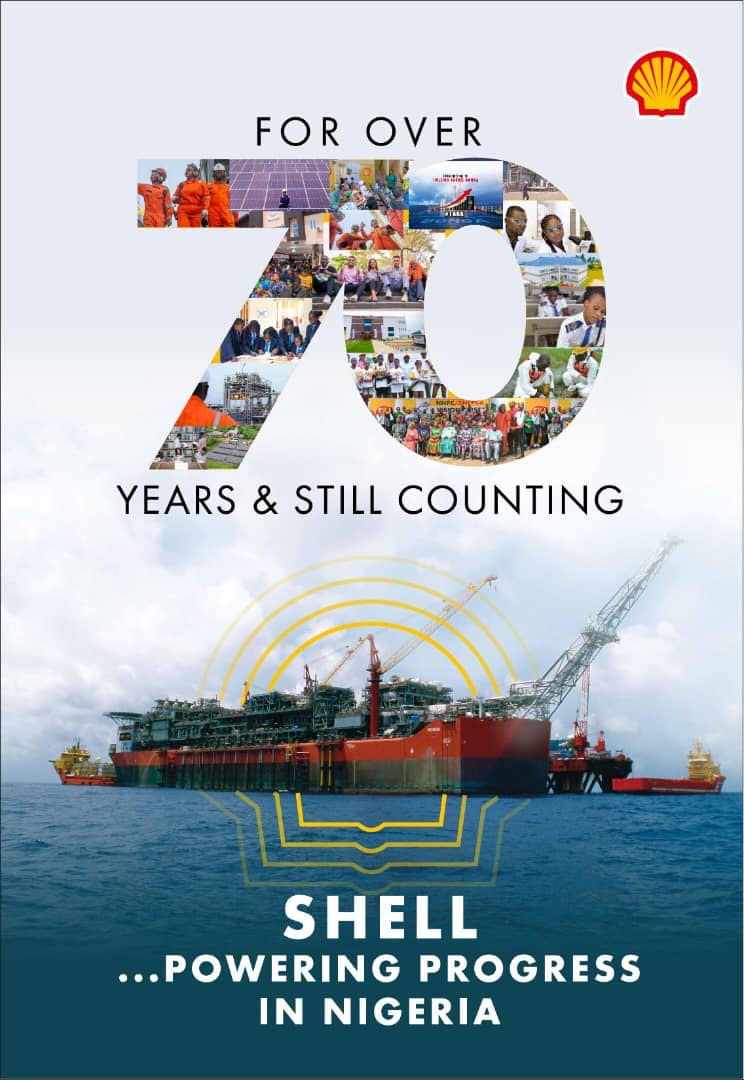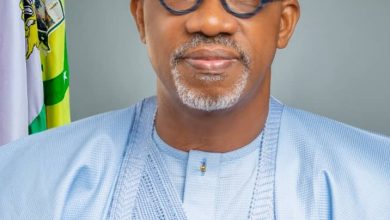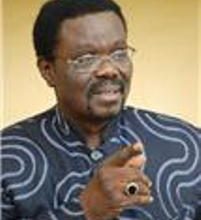
For the records: Restructuring Nigeria: Crucial lessons from the 2005 and 2014 political and national conferences
Being Convocation Lecture Delivered by Prof Auwlau H Yadudu at Crescent University, Abeokuta October 14, 2022
INTRODUCTION
The clamor and agitations for “restructuring” the polity or federation has surged and ebbed over the years. Past attempts to address a variety of such agitations by elites, members of political class, pressure groups and incumbent national governments have equally been varied and discordant. I shall examine such agitations, responses to them and the outcomes accomplished or abandoned. I intend to situate my analyses in the context and the precedent of such attempts in 2005 and 2014. I shall call attention to lessons to be drawn as regards the actions, motives and ultimate outcomes that informed the restructuring attempts made and how these were impacted for good or worse. The address posits that such actions and motives have tended to result either in aborting the enterprise or participants making unattainable or untenable recommendations.
RESTRUCTURING MEANS MANY THINGS
If you asked agitators and disputants what they meant by ‘restructuring’, you would get as varied responses as there are such canvassers. It means different things to many divergent strands as to what it connotes and from a variety of perspectives.
To some it connotes or is attained only when there is ‘rotation’ or zoning of the office of the president between North and South and other key offices within and between senatorial districts, political parties etc.
To others, who decry the mistake of the 1914 Amalgamation, and would rather that it is revisited, our federation is restructured only when ‘ethnic nationalities’ are able to convoke a Sovereign National Conference to renegotiate the terms of their coexistence. They would contend that the Constitution tells a ‘lie’ in its preamble by claiming to have authored been by ‘we the people’ when in fact it has been brought about via a military decree.

There are others who would feel content that their craving for true federalism is satisfied only if you could create one more additional State for a particular region that feels it has been short-changed in the geopolitical calculus and the configuration of the country. Yet other proponents would insist that only ‘true federalism’ which is attained through ‘fiscal federalism’ or resource control, would meet their criteria and their definition. There is another view which considers that the extant federal system, as embodied in the Constitution of the Federal Republic of Nigerian 1999 (the Constitution), is only federal in name but unitary to all intent and purposes.
They would point out that it has over-concentrated power and resources at the Center and installed weakened units which constitute the federation. To them, restructuring is attained with a redistribution and devolution of more powers and commensurate resources from the center to the other tiers. As an integral component, they would prefer the abolition or delisting of the Local Government Councils as a third tier. Another version of this latter view canvasses for the establishment of a federation of regions and/or geopolitical zones to replace the State structure with greater powers and resources devolved to the new units. There are strident calls, including by very eminent legal luminaries, who strongly believe that our nation is doomed if we did not jettison the 1999 Constitution to return to the 1963 Westminster parliamentary system with the compliment of the regions in tow. Yet others, who have surveyed how the constitution has been operated for almost a quarter of a century, have concluded that the unsatisfied agitation for restructuring would perhaps be best met with appropriate tweaking and adjustment of its unworkable and expensive sections.

There is the feeble appeal from some who call for matters to be left to the judiciary to help with the restructuring project through its interpretation and application of the relevant constitutional provisions as has obtained under the American system. Finally, you would have to contend with those who firmly believe that the only legal and legitimate way to restructure our polity and federal system is through the recognized constitutional amendment processes as enshrined in and validated by the Constitution, the Supreme Law and foundation from which all persons, institutions draw legitimacy.
PUTTING MATTERS INTO CONTEXT
The foregoing are the varied and discordant rhetorics regarding what amounts to restructuring the federation and how best to attain it. To better appreciate how the various agitators have over the years stacked their claims and worked to actualize them, l would like to situate them in the context of two concrete scenarios of the National Political Reform Conference (NPRC), convened by President Obasanjo in 2005 and the National Conference (NC) established by President Jonathan in 2014. Side by side with these, l shall situate how these initiatives, which l call informal processes of restructuring, played out against the background of the perennial constitutional amendment processes, the formal restructuring processes, undertaken by the National Assembly (NASS) with concurrent participation of the State Houses of Assembly.
To actualize any idea or combination of ideas for restructuring as outlined above, individual advocates, groups and even governmental institutions and organs have sought to attain their objectives in what l have characterized as informal and formal settings.
To illustrate this, I will dwell on two Informal settings which occurred in the form of inter-party initiative of 2000, the NPRC of 2005 and the NC of 2014. I call these informal because convening them was impromptu; they were ad hoc in nature and the outcome of such initiatives were advisory. Although you could not question the legitimate right of citizens to embark on such initiatives or the competence of the Presidents who convened the Conferences, participants at these, who were undoubtedly eminent statesmen, professionals and distinguished personalities, were, however, unelected and could not claim to represent the will of the people. They lacked any legitimacy or power to legislate or adopt any binding resolutions. Their input in a restructuring process is at best advisory.
On the other hand, a formal setting is that which is institutionally established and recognized by the Constitution and the laws of land such as the NASS. Participants in the formal process, ie members of the NASS, possess the power and legitimate authority to engage the public in generating ideas for any form of restructuring. They derive their mandate from both the electorates, as representatives of the constituencies, and the Constitution which prescribes what processes to follow. They are both enabled and constrained by such procedures. Any resolution they may adopt, having met all procedural and legal requirements in their restructuring process, is binding on all persons and authorities.
PRECEDENT FROM 2005/2006 FORMAL & INFORMAL EXERCISES
Next l shall briefly describe how the restructuring initiatives played out in both the formal and informal fora which l referred to above. In 2000 an Inter-Party committee, comprising members of the PDP, APP but boycotted by AD and led variously by Amb Yusuf Mamman, Clement Ebiri, worked on and proposed a model draft constitution which extensively modified the 1999. It initially had the support of the President but it’s work fizzled out due to political intrigues, intra-party squabbles and as the NASS assumed it’s role to amend the constitution.
Despite the simmering agitations for restructuring and the need to bring about much-needed changes to ameliorate the observed deficiencies in THE Constitution early enough, nothing was heard of it’s report and NASS did little to amend the constitution between the period 2000 to 2004. The Failing health of President Yaradua; the Supreme Court judgement on the resource Control dispute; and the unearned but lengthy extension of time that governors, whose elections were judicially invalidated after they have been on the seat for considerable time and got re-elected to serve another full tenure, all combined to trigger feverish actions to formally amend the constitution and with that bring about a ‘restructuring of some sort’.
The Constitution was amended to enshrine the principle dictated by the doctrine of necessity to fill the vacuum where a President or Governor fails or is unable to delegate their executive authority to a Vice-President or Deputy Governor for that to automatically occur after the expiry of a definite period of absence from office or unavailability. Governor’s unearned extended time in office was subtracted should they be re-elected following invalidation. Funds for the judiciary were made to be a first charge on the consolidated revenue of the federation.
However, in the middle of his second tenure, with unending calls to restructure and a disguised agenda, President Obasanjo heeded the call in 2005 to trigger a restructuring process on the formal and informal dual tracks.
He convened the National Political Reform Conference (NPRC) overwhelmingly dominated by nominees he and the Governors had hand-picked. He initially tabled the model draft constitution produced by the Amb Mamman committee, the Makarfi Report and the Constitution for deliberation. Members, comprising senior citizens, elder statesmen, representatives of political parties and a variety of NGO’s, were put together using a template that the Executive drew up. Although majority were highly distinguished citizens who had served the nation in various capacity, members of the NPRC were unelected, did not represent the popular will and quite a few, as it later turned out, were the President’s political journeymen tasked with an undisclosed agenda.
The NPRC produced a report with accompanying draft constitution that the President, who had convened it, was unable or unwilling to implement or table before the NASS. To date nothing has been heard of that report which lies somewhere in the archives gathering dust.
Parallel with the NPRC, and some would say to complement it, the NASS established the Mantu-led constitution review committee to prepare for the eventual alteration of various provisions of the Constitution on its own terms and according to processes and steps enshrined in it. The NASS put out its agenda specifying areas they hoped to amend in the Constitution and called for input from the public, individuals, NGO’s, State Governments and other agencies. It organized and orchestrated public hearings held across the nation. At the conclusion of its processes, the NASS proposed series of amendments to the Constitution. It made what turned out to be a fatal error by tabling the draft as a single Bill to alter the constitution. When one section dealing with tenure elongation failed to scale through to the second reading, the entire set of recommendations came down crashing and the NASS effectively abandoned its own formal restructuring initiative. The Mantu report suffered the same fate as the NPRC.
A few observations on happenings at both the NPRC and NASS while they conducted their proceedings. Controversies and disclaimers rented the air as regards the timing, motives – albeit disguised -and subtle manipulation of the process particularly by the Executive arm. The Executive sought to by-pass, manipulate or force the hands of NASS in the kind of outcome they expected from the exercise. The oVerwhelming members of the NASS, except for its leadership, were not amenable to being ignored, manipulated or coerced to achieve the intended outcome.
The general public, particularly the opposition, being from the outset skeptical of the whole process, chose both to avoid being part of it and to oppose it vehemently to the last minute. Despite glaring evidence to the contrary, arrowheads of the President both within the NPRC and the NASS stoutly pretended that there were no external subtle attempt to manipulate the process towards the attainment of particular objectives. At the end of both the formal and informal processes, neither initiative has achieved anything by way of restructuring the polity or federal system. Despite the huge resources expended by both, everything appeared to have gone up in flames.
PRECEDENT FROM 2014 FORMAL & INFORMAL EXERCISES
Although the various attempts at restructuring, described above, failed spectacularly, the agitation and clamour for one variety or another did not abate. If any anything, its crescendo and tempo increased. Neither President Yaradua nor Jonathan could muster the courage to give it another try. However, Yaradua, while acknowledging the flawed electoral system under which he was elected, established the Uwais Committee on Electoral Reform. This made far reaching recommendations some of which were incorporated in the constitutional alteration undertaken by NASS subsequently.
Upon assuming his second tenure, Jonathan resisted all calls to convene another informal forum like the NPRC. However, and rather suddenly late in December 2013 barely a year to the end of his tenure, he established the Presidential Advisory Committee on National Conference headed by Senator Femi Okunrounmu. Unlike its predecessor, the Makarfi Committee, it was billed to recommend for the convening of a Conference of Ethnic Nationalities to chart the course for restructuring the federation. In February 2014, the Committee, to the surprise of those who had agitated for the convening of a Conference of Ethnic Nationalities, urged for the adoption of the very template used by President Obasanjo.
Having heeded the call and accepted the Okunrounmu Committee report and so as to appear to have satisfied the vociferous agitations for restructuring, Jonathan, much to public protestations and disapproval of the NASS, established what he coined the National Conference (NC). At the inauguration of the NC, he rolled out a set of agenda upon which he invited the Members to deliberate. The Report of the Okunrounmu Committee, the President’s Inaugural Address and the Constitution were tabled for deliberation. Once more, Members, comprising senior citizens, elder statesmen, representatives of political parties and a variety of NGO’s, were put together using a template that the Executive drew up and borrowing from Obasanjo’s playbook. As a symbolic gesture of goodwill, Jonathan invited Groups claiming to speak for ethnic nationalities to nominate members to participate. Although majority were highly distinguished citizens who had served the nation in various capacity, the hand-picked members of the NC were once more unelected, did not represent the popular will and quite a few, as it later turned out, were the President’s political point men tasked with an unspoken agenda.
The NC produced a report with accompanying draft constitution. As with Obasanjo before him, Jonathan, who had convened it, was unable or unwilling to implement or table the report before the NASS. With campaigns for national elections in full swing, the President was in no mood to implement even those recommendations meant for the Executive arm nor was he prepared to table others meant to form part of the constitutional amendment. Like it’s predecessor, the NPRC, to-date nothing was heard of that NC report which lies somewhere in the archives gathering dust.
Parallel with the NC, and some would say to complement it, the NASS established the Ekweremadu-led constitution review committee to prepare for the eventual alteration of various provisions of the Constitution on its own terms and according to processes and steps enshrined in it. The NASS put out its agenda specifying areas they hoped to amend in the Constitution and called for input from the public, individuals, NGO’s, State Governments and other agencies. It organized and orchestrated public hearings held across the nation.
At the conclusion of its processes, the NASS proposed series of amendments to the Constitution. It however avoided the error of 2005 by proposing each item sought to be amended to be a distinct and separate Bill such that there were over 25 such Bills. The Bills went through the adoption processes at both the NASS and State Houses of Assembly. When submitted to the President for his assent, something curious happened to the Bills duly passed by NASS and that met the concurrence of the required no Houses of Assembly of the State.
One account claimed that the President had assented to the Bills but another insisted that he had vetoed certain Bills, particularly those which dispensed with the requirement of presidential assent and a few others which, the Attorney General of the Federation claimed, had not met four-fifth support. When the NASS approached the Supreme Court to resolve the dispute, the court advised parties to settle the matter out of the judicial forum. That marked the end of the amendment process which would have formally restructured the federation.
A few observations on happenings at both the NC and NASS are also pertinent at this stage. Controversies and disclaimers rented the air as regards the timing, motives – albeit disguised -and subtle manipulation of the process particularly by the Executive arm. To underscore its disapproval of the informal process of the NC, the NASS flatly refused to appropriate funds for it. Yet again, the Executive sought to by-pass, manipulate or force the hands of NASS in the kind of outcome they expected from the exercise. The overwhelming members of the NASS, except for its leadership, were not amenable to being ignored, manipulated or coerced to achieve the intended outcome. Despite glaring evidence to the contrary, arrowheads of the President within the NC stoutly pretended that there were no external subtle attempt to manipulate the process towards the attainment of particular objectives. But quite on the contrary, some within the NC did everything to produce a new Constitution which they pushed for adoption by referendum. At the end of both the formal and informal processes, neither initiative has achieved anything by way of restructuring the polity or federal system. Despite the huge resources expended by both, everything appeared to have gone up in flames.

PATTERNS, PROCESSES AND DEADLOCK
Before l outline the highlights of the failed attempts at restructuring, perhaps it is appropriate at this junction to describe the patterns and processes which have tended to precede both informal and the formal constitutional amendment. Both activities have tended to be ill-timed being commenced barely a year to national elections. In the case of the Conferences, the public have come to view them as afterthought or half-hearted attempts which are viewed with suspicion. On the other hand, the perennial constitution amendment exercises undertaken by succeeding NASS, had become a routine outing embarked upon less for any need to effect the required changes to the constitution but more to squander huge resources annually budgeted for it. Owing to past experiences, the public have also come to view, especially the recurring Conferences, as decoys for the Executive to push for its undisclosed agenda at shaping the restructuring in its image or to bow to the fad of being fully supportive of one form or another.
It has been my view as pointed out that the formal constitutional alteration endeavors have been adjudged as failed. Such failures may be attributable to many reasons. Firstly treating the alteration process similar to ordinary law-making is problematic. But it is arguable that the relevant provisions in the Constitution would seem to prescribe that altering it must be by way of the adoption of resolutions and their passage in the form of Bills for them to be ripe for adoption by the State Houses of Assembly. Not being an ordinary legislation, subjecting a Bill to amend the constitution to presidential assent after it had been adopted by the NASS and concurred to by the required number of Houses of Assembly is cumbersome and perhaps unwarranted. Which is why the US constitution has dispensed with that. However, over-riding a presidential veto of such Bills by NASS is itself problematic since the Bills would remain inchoate if not concurred to by the State Assemblies. This conundrum would appear to be insurmountable save if the relevant provisions are themselves altered to dispense with that requirement. The whole issue is circular.
The recurring Conferences too have their reasons for the seeming failure. The template used to convene them lacks sufficient legal and representational backing or support to clothe them with legitimacy or mandate to displace or alter an existing constitutional order or system. Despite the credentials of members convened to undertake a restructuring agenda, this lack of mandate and the casual, some may say unorthodox, ways and means adopted has led to the outcomes being torpedoed or totally ignored. As l shall demonstrate later, the surreptitious manner some within and outside the Conferences have gone about proposing all sorts of unattainable and untenable propositions to actualize their vision of a restructured federation has thrown spanners in their works and cast a pale of the appearance of illegality or credibility crises to their proposals.
RESTRUCTURING BY STEALTH, SUBTERFUGE OR FIAT: ECHOES FROM NPRC & NC
I should next turn my attention to highlight some key features of restructuring attempts made rather surreptitiously at the NPRC and NC and outside its formal purview or competence.
Firstly, I should recall here that during its proceedings, the Judiciary and Legal Reform Committee, in which l served and which was ably led by distinguished and very senior members of the Bar, Prince Bola Ajibola and late Abdullahi Ibrahim, the news broke, on 23rd April 2005, that there was a draft constitution being drawn up outside the walls of the NPRC and circulated to members by Unknown persons.
To avoid credibility problems for its work and protect the integrity of members of the Committee, the chairman, who echoed the decisions earlier taken on 25th April, disavowed knowledge or authorship of the document and the Committee rejected it outrightly. To their credit, the leadership of the NPRC wasted no time disown it. It was apparent that some members of the NPRC and an administration complicit in their designs had thought they could force the hands of the Conference to rubber-stamp the unauthorized draft.
What was dubbed the “mysterious constitution” and ‘drafted’ outside the NPRC venue, allegedly at the behest of the Executive and coordinated by some members of the NPRC with the intention of foisting it on the Conference as its product, contained, among several others, following major amendments:

Amended sections 140 and 186 respectively to elongate the tenure of the President and Governor to six years stating that the “President shall vacate office at the expiration of 6 years commencing from the date he took oath of office”. Ditto the Governor
The draft proposed for the modification of s.3 to remove of Local Government Areas from the Constitution and s.4(3) to nullify the Supreme Court decision in the suit: Lagos State v Attorney General of Federation. It specified that the NASS shall prescribe uniform guidelines for the creation of LGA and that any LGA created not in compliance with the section shall not be recognized for any purpose whatsoever.
Section 93(c) was amended to empower The Auditor General of the Federation to conduct periodic checks on States, LGA’s and other agencies and commissions. On the applicability of the Sharia, the draft amended section 1(3) to provide that “if any other law, customary or religious practice, is inconsistent with the Constitution, that law or religious practice shall, to the extent of the inconsistency, be void”
In a new section 333, the draft proposed for the amendment of s.308 to remove immunity to President and Governor for any alleged criminal conduct. The draft also sought to nullify the Supreme Court decision on the onshore/offshore dichotomy by proposing two new subsections to s.166 stating that “ .. the two hundred meter water depth isobaths contiguous to a state of the federation shall be deemed to be part of the state for the purpose of computing the revenue accruing to the federation account to the state”
Building on a recommendation for the establishment of a Constitutional Court, the draft proposed for the impeachment of either the President or Governor to be subject to appeal to this court. Section 148(10) was modified to prescribe that any such officer duly removed by the Assembly can appeal to this court within forty-eight hours and the case shall be heard within fourteen days
During the NC proceedings too, on 30th June 2014, there was furor and commotion at one of its deliberations. A member had alleged that the leadership of the NC was working to produce a new constitution in a manner not authorized or not in conformity with resolutions adopted by the Conference. After a prolonged debate, nerves were calmed and it was thought that matters had been settled when the leadership disclaimed any such action. However it later turned out that a member of the NC, Dr Dokpesi, who was the convener of an initiative to harmonize discordant positions of geopolitical zones, under the guise of a Bridge Building Committee, had worked to produce a Draft Constitution which contained many novel provisions in respect of matters not adopted or approved by the NC. As in the case of the mysterious constitution of 2005, l wish to highlight a few of such major amendments contained in what was dubbed the Dokpesi draft.
It proposed for the adoption of a two-tier Federation of States and created Federal and State constitutions while providing further that if the constitution or any law of the federating unit is inconsistent with the National Constitution it shall be void to the extent of the inconsistency. It also sanctioned the merger of States, which so desire, to become zonal structures. In addition to providing for the creation of one more State for the South East, the draft carved out, established and recognized 48 more States. See the attached map.
FOOTNOTE: You want to share story with us? You want to advertise with us? You need publicity for product, or service, or event? Contact us on WhatsApp +2348073463653 or email penpushing@yahoo.com







